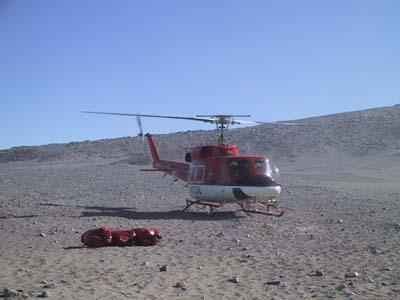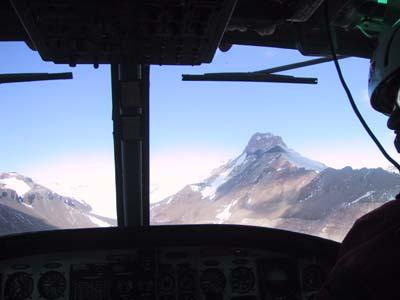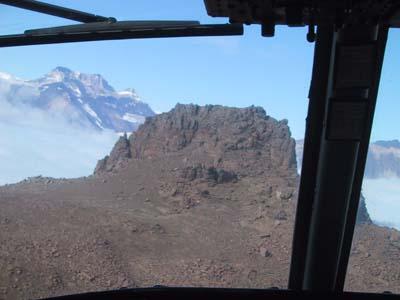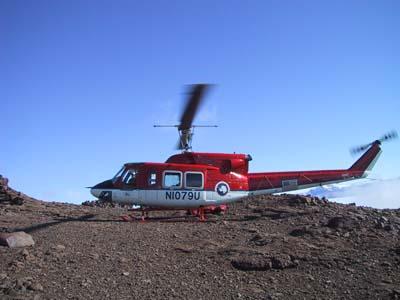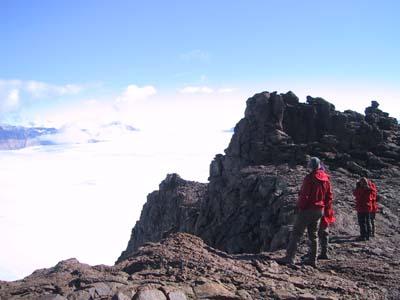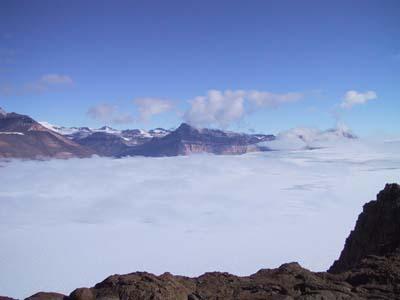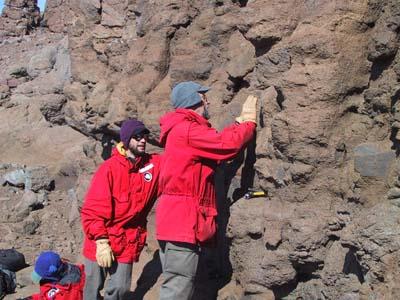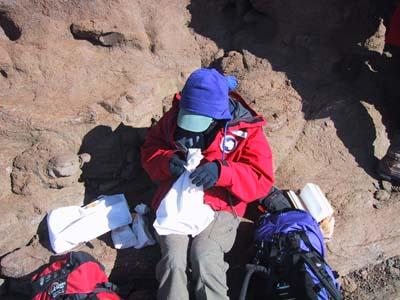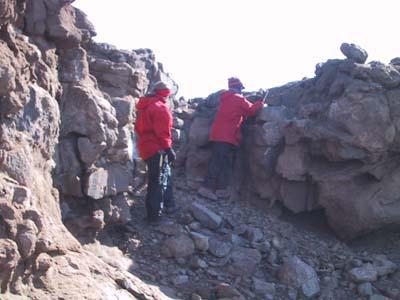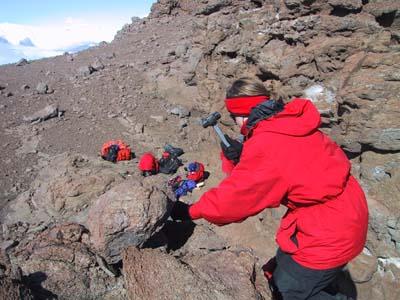
|
13 January, 2003Solitary Rocks - Pandora's Spire Today we are flown by helicopter to an area about 30 miles away from base camp. Pandora's Spire juts up above the surrounding landscape and is the pinnacle of a region known as Solitary Rocks. We have glaciers on three sides of us here. Although the altitude is about 5,500 feet we will not be hiking today. Even though we're over a mile high the physiological altitude is even higher due to the naturally thinner air at the poles. In fact, the Spire shields us from the wind and working in the sun is quite pleasant. We are here to collect segregation samples for a project that Karina is working on. Segregations are rock that flowed into the molten parent rock while it was solidifying but not yet completely solid. The parent rock was thick, then tore or fissured, and molten rock was able to move into the fissure. The segregation that is the oldest (or moved in first) will be higher is content of elements such as aluminum, sodium, and others than the latter segregation. Samples are taken not only of the segregation itself but also above and below the segregation to gain a better idea of how the rock comes together. As with the granitic dikes, the samples are carefully numbered and sequenced. Labs back in the US including those at Johns Hopkins University will analyze them. Antarctic Tidbits 1. If Antarctica's ice sheets melted, the worlds oceans would rise by 60 to 65 meters (200 - 210ft) - everywhere. 2. Antarctica is pushed into the earth by the weight of its ice sheets. If they melted, it would "spring back" about 500m (1 625 ft). It would do this v...e...r...y s...l...o...w...l...y taking about 10000 years to do so. Scotland and Scandinavia are still rebounding today after the last ice age - at the rate of half a meter a century in the Northern Baltic - the fastest place. 3. Antarctica is the best place in the world to find meteorites. Dark meteorites show up against the white expanse of ice and snow and don't get covered by vegetation. In some places, the way the ice flows concentrates meteorites there. Source: http://www.coolantarctica.com/Antarctica%20fact%20file/fascinating_facts_about_antar.htm
Contact the TEA in the field at . If you cannot connect through your browser, copy the TEA's e-mail address in the "To:" line of your favorite e-mail package. |




